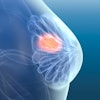The workflow and efficiency benefits of implementing a RIS or PACS have convinced many imaging facilities to install them. Most practices in the U.S. either have or are strongly considering the adoption of both of these technologies.
Installing a RIS or PACS can improve operational efficiency and effectiveness in a radiology group, and the integration of the two technologies can bring real productivity gains to the clinical trenches.
"RIS/PACS integration, and technology solutions in general, can’t solve every business problem. However, they have a core purpose in solving some problems, and an integrated RIS/PACS is truly a cornerstone in that operation," said Derek Schoonover.
Schoonover, RIS/PACS product manager for GE Medical Systems of Waukesha, WI, offered his perspective on the benefits of a combined system at the 2003 Radiology Business Management Association summit in San Antonio.
"If I’m efficient in all of my processes within my business, and effective in my outcomes, I’m going to be able to increase my revenue and decrease my costs and make sure my quality is in check," he said.
Process management
Schoonover said the goals of a radiology practice are to provide fast, correct, cheap, and easy access to services. Accomplishing these goals is measured in two areas of satisfaction: patient satisfaction, with easy scheduling, a quick exam, and a correct diagnosis; and referring-physician satisfaction, with an easy referral process, a correct diagnosis, and quick report turnaround time.
A RIS provides core workflow capabilities to ensure scheduling ease, order management, patient tracking, reporting, transcription, management reporting, and billing. It also provides functions for supply, equipment, and modality tracking management, as well as other advanced features, Schoonover said.
A PACS provides quick image viewing and manipulation from multiple modalities, image storage, and image distribution capabilities. It also can provide speech recognition and transcription technology and can distribute results across a network.
Together, these technologies can reduce report turnaround time, optimize collections, reduce exam time through efficient scheduling, reduce costs associated with film and report storage and retrieval, manage equipment and supplies, and provide on-demand access, both internally and externally, Schoonover said.
Synergy versus chaos
"When we talk about RIS/PACS, it’s not just about RIS and PACS coming together, it’s about bringing scheduling, order management, patient tracking, reporting, transcription, and billing into a single system," he said. "It’s critical that diagnostic reporting information is associated with RIS information -- I can’t have two separate systems."
In traditional RIS and PACS environments, multiple silos of information are created by the technologies such as a RIS server system, a PACS server system, and a reporting server system. Each maintains its own patient data, procedure data, order and exam data, reports, and history, which will need to be reconciled at some point.
"It’s quite confusing and it looks like a pile of spaghetti when it’s diagrammed, which is exactly what a lot of RIS and PACS installations look like today," he said.
In some architectures, this results in a radiology room with a PACS viewing station, a RIS viewing station, and a reporting station. The information is available, but navigation among the systems has now become a barrier to efficiency, Schoonover observed.
An integrated RIS/PACS solution provides a single view to the radiologist of order information, patient information, current and historical images, and results. It permits a radiologist to select an exam, view the images, dictate a report, and approve the report for delivery to the referring physician.
"It’s not until we get to the techs, where we throw this modality beast into the mix, that things start to get hairy. RIS, PACS, modalities of all kinds and every flavor and every version and every age; there is all kinds of stuff that can cause problems that can make a tech’s life absolutely chaotic," Schoonover said.
In many RIS/PACS installations, the technologist’s typical workflow pattern is to go to the modality and enter or verify patient information, order information, and exam status; then go to the RIS and verify patient information, order information, and exam status; then go to the PACS and verify or enter patient information and order information; perform the procedure on the modality; verify image quality on the PACS; and change the study status. Finally, the technologist changes the exam status on the RIS.
"All this duplication of effort increases the opportunity for errors, drives the techs insane, and produces inefficient and ineffective processes," Schoonover said.
On the other hand, an integrated RIS/PACS solution gives the technologist a single view for order and patient information, images, and exam status. The technologist can then start the exam, perform quality control on the images, complete the exam, and issue a resolution from a single console.
Administration of independent RIS/PACS networks can be an information technology nightmare, he said. In a RIS/PACS solution that maintains independent silos of information, each server system must synchronize its data with the others.
Moreover, each server has its own data and equipment maintenance needs, and each has its own reporting and debugging infrastructure. Inevitably, one or more of the systems can be expected to undergo either an equipment or software upgrade, which can lead to unpredictable results when they next attempt to synchronize.
"An integrated RIS/PACS will have a single administrative infrastructure that can be managed from a single console. There will be no need to synchronize data, and no need for interface management. Also, there will be a single source for management reports on the system," Schoonover said.
"The advantages of an integrated RIS/PACS is a system that reduces exam turnaround time by making all necessary information available and quickly and easily accessed by the user," he said. "It permits exam time efficiencies by reducing the number of steps needed for a patient to be scheduled, an exam to be performed, a diagnosis to be rendered, a report to be issued, and a bill to be processed. Lastly, by having a single data warehouse, system maintenance and downtime can be reduced and data quality and accuracy can be ensured by not having to synchronize multiple systems."
By Jonathan S. BatchelorAuntMinnie.com staff writer
July 22, 2003
Related Reading
Online scheduling improves satisfaction, July 3, 2003
PACS provides push for paperless, June 9, 2003
Grouped procedures can cause informatics headache, June 8, 2003
RIS/PACS integration -- what is it and what are its benefits?, June 6, 2003
Web-based integration of PACS and RIS systems improves workflow, patient care, May 12, 2003
Copyright © 2003 AuntMinnie.com


















